To
understand Survival trapping we must understand Animal behavior to some degree
so let’s first explore that. All animals need the same things we do. They need
Shelter, Water, and Food. If we understand the Routes animals use to obtain and
move from one to the other we can recognize good places for trapping them. The
other concept we should get accustom to is that on the water’s edge is the best
place to secure meat sources the majority of the time. The next thing we have
to realize is that meat sources and trapping do not always have to involve 4
legged fury critters. Some of the easiest meat we can obtain is from animals
that actually live the majority of their lives in or near water like; Fish,
Turtles, Frogs, Snakes, and Crayfish.
Let’s
first look at Trapping of these Lower Food Chain Resource meats that can also
be used as bait. This is a key concept because a baited trap has a much higher
percentage chance of success than a blind set. If we work our way up the food
chain we will fill our bellies as we go and improve the foods we can eat along
the way.
Catching
or Trapping Animals that live in the water can be accomplished in several ways
so let’s look at the types of meat one a t a time. Fish can be captured without
bait by use of Nets or Improvised seining devices like a T-Shirt. If you are
carrying a large roll of tarred Mariners Bank line which I highly recommend
nets can be easily fashioned with overhand knots on a main line. The diameter
of the holes or meshes will dictate the size of pray you can catch. Dip Nets
are easily fashioned in this manner and are very handy for catching smaller
fish as well as other water critters. A Gill net that stretches across a
waterway can be made if enough line is available but dip nets and fishing traps
are a better use of cordages. Fish can be caught with snare type devices by
either by using an available hook, bent safety pin, or carved gorge type hook.
Bait is easy enough obtained for fishing by turning over logs until worms or
grubs are found. A simple Trigger system like the one pictured will work very
good for bottom fishing and setting the hook when the fish takes the bait. Some
type of Alarm system like an old can filled with rocks is a good bet for any
trap that will catch an animal live so that you can immediately react.
Turtles can be captured on the same spring
type traps as fish but both can also be secured on simple drop lines or bank
lines as well. M shaped bank traps that will allow a turtle to climb onto the
bank for bait but not allow return to the water a good traps for overnight
working while you are asleep. Dip nets can work for smaller turtles but larger
turtles are hard to approach with them. Remember that most turtles that flip
into the water during the day will simply swim under the log they were sunning
on to seek cover.
Frogs are fairly easy to stun with
any flexible stick if hunted at night with a headlight to freeze them in place,
this technique will work whether the frog is on land or on the top of the
water. A simple hook with any red fabric chard will attract frogs to a hook and
line. Dip nets are also useful for frogging.
Crayfish will come to any meat
source lying on the bottom readily so a simple circular dip net without the
handle can be laid on the bottom with bait in the center, if lift lines are
attached to the net frame, simply lifting it out of the water will capture all
Crayfish on the bait. This technique works best at night. You can also make a
simple tube trap from any pop can as seen in the photo placing skewers into the
can at an angle inward to allow the animal in but not back out when he goes in
to east the bait.
Snakes will be found in the water
or on the edge especially at night when frogs are present they can be
dispatched as easily as a frog with a nice flexible stick or pinned down with a
“Y” branch and dispatched. Actually trapping a snake is tough as they are
maters of escape.
Once you have secured one or more
lower food chain meat sources as I call them (The things mammals eat), you can
now use the left over material for baiting traps to capture larger animals.
Small mammals like mice, rats,
chipmunks, and ground squirrels are about the largest animal that can easily be
taken by deadfall traps and are most of the time too small to set off more
complicated spring type traps. Figure 4 deadfalls are complicated and time
consuming better to use a simpler mechanism like a split stick type trigger for
an deadfall setup that has a baited trip wire made from small diameter cordage.
Remember that any deadfall device must be 5 times heavier than the target
animal and having the bait as far to the back of the trap as possible will
decrease the margin of error.
Birds, small birds should be
trapped in open clearing where visibility of bait is optimal they can also be
taken by a similar trigger system using a cage type trap built in log cabin
fashion. Most of the time bright colored berries or fruit will be most
attractive to birds as bait. Remember to alarm the trap if possible as the bird
will be captured alive. Larger birds can be taken with nets especially at
night. During nesting season most water birds like geese or ducks will defend a
nest to the point of becoming very vulnerable to dispatch giving the
opportunity for eggs as well.
Medium size mammals like Opossum
and Raccoon are about the largest animals you will want to tackle in a short
term situation so that they can be processed and consumed easily without having
lots of meat laying around camp attracting larger predatory or scavenging
mammals. When trapping these animals you
will want to set traps just off the trail going to or from a water source so
that a non-target larger animal like a deer does not trip over and set off you
trap unnecessarily. Spring snares can be devised to capture these animals and
several examples are pictured but remember a few guidelines. The snaring device
that is spring loaded must pick the animal completely off the ground and
suspend his weight as we cannot guarantee a neck catch, if not he will surely
chew his way out unless wire or cable type snares are used. Spring loaded
snares should always be alarmed for immediate reaction to reduce suffering of
the animal as well as his own escape from the trap. All spring snares will
require and engine or catalyst to make the snare close around the animal. Many
things can be used for this from a simple bent sapling to a counter weight like
a heavy log. Items from kit can also make great engines including bungee cords
or sling shot type latex bands. Blind
snares can be set in small game trails and should be suspended bearing in mind
the animals height at the head when walking. We are always striving for a neck
catch when snaring and for opossum and raccoon if you can place a balled fist
uner the snare that will be pretty close. You want the opening of the snare for
these animals about ½ again larger that your fist diameter. Many styles of
Spring type traps can be used but I find that the simpler the design the better
a simple trigger system employing a pressure release toggle will be adaptable
to the several applications and the majority of components can be easily carved
in camp. In an extreme emergency the toggle type traps can be constructed
easily with no tools at all. I will picture several variations of the toggle
trigger system here for you and it will be fairly easy to reproduce with
practice.
Alarming of any trap possible is
key and location of the traps in conjunction to you camp is also necessary. Try
to keep all traps within a 50-100 yard perimeter so that they can be easily
gotten to in the middle of the night if you catch something. Scavenger type animals like Opossum and Coon
are not shy of humans for long and scent control is not a worry with them. You
may however at some time capture a non-target animal. If it is a large animal
he will most likely escape if it is a Skunk you are one step away from a few
days of good stink, but so goes life in an emergency scenario, just do you best
to free the animal and watch his back end LOL-
Dave Canterbury
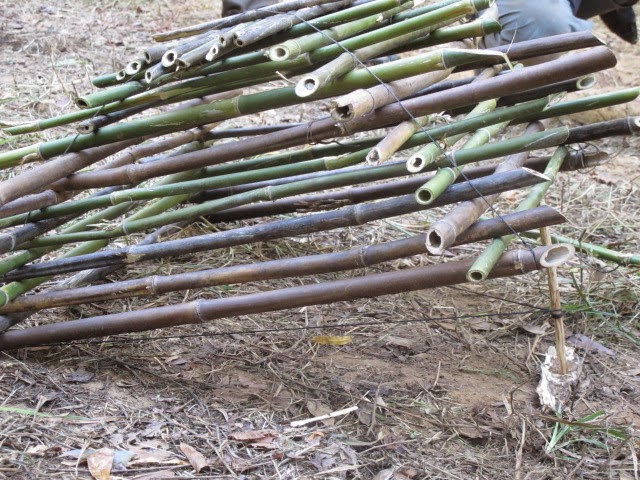 |
| Cage Traps like this are good for smaller bird species when baited with local seeds and berries |
 |
| Fishing Traps allow you set several lines along the bank, the hook will be set by a spring pole |
 |
| Strong and long forks are necessary anytime spring poles are used |
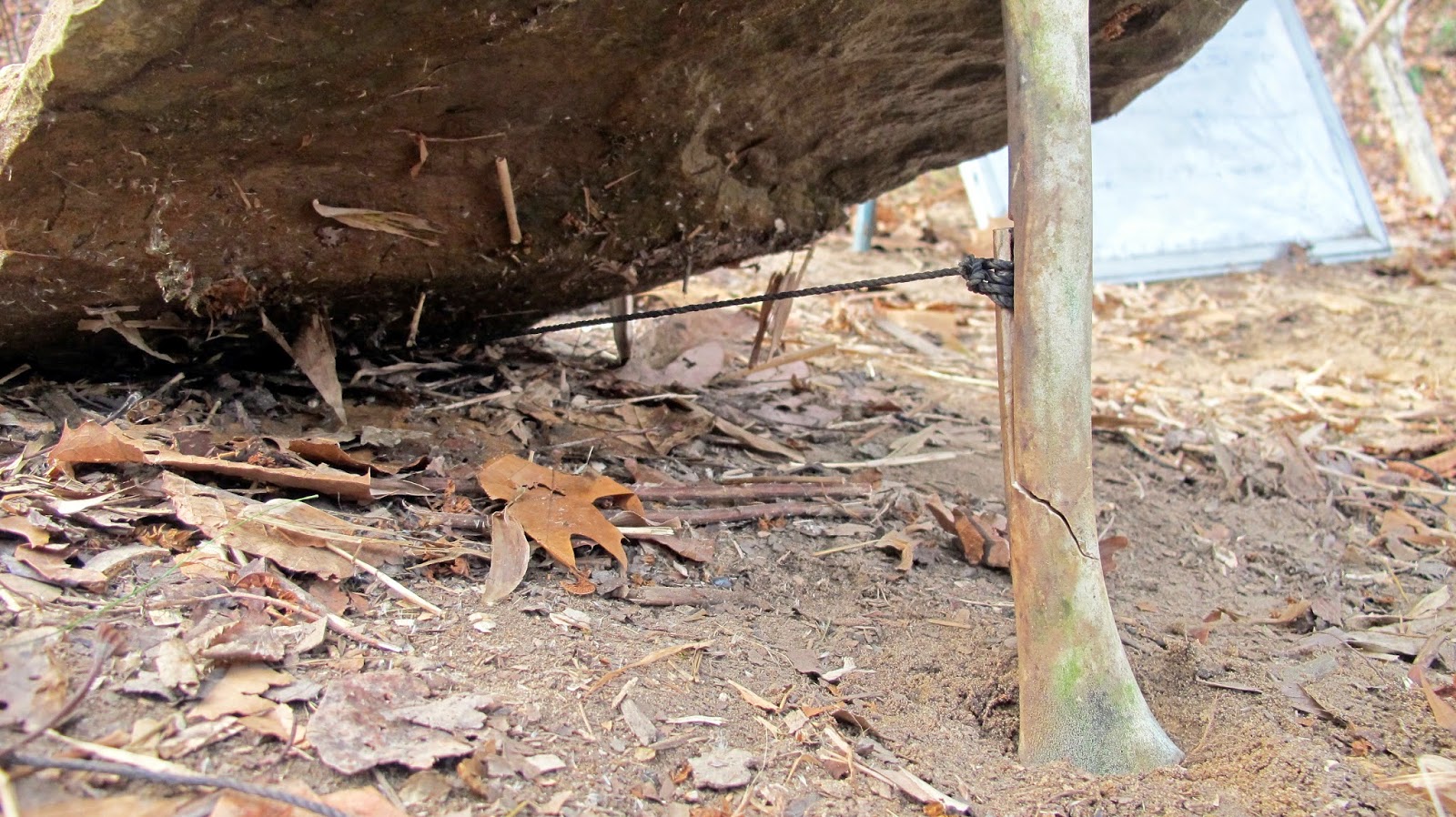 |
| Natural materials like bones will make good triggers as they add eye appeal to the set as well |
 |
| Simple Split and Promontory Peg type triggers work well and can be adapted to many types of traps |
 |
| Fishhooks can be improvised from the landscape as well if needed |
 |
| Simple traps like this tube will catch plenty of crayfish and are easy to make |
 |
| Gill nets and Stop Nets are a very important tool for Survival Food Procurment |
 |
| Any bait should be placed where the animal is forced to work for it and be in the deepest area of the trap |
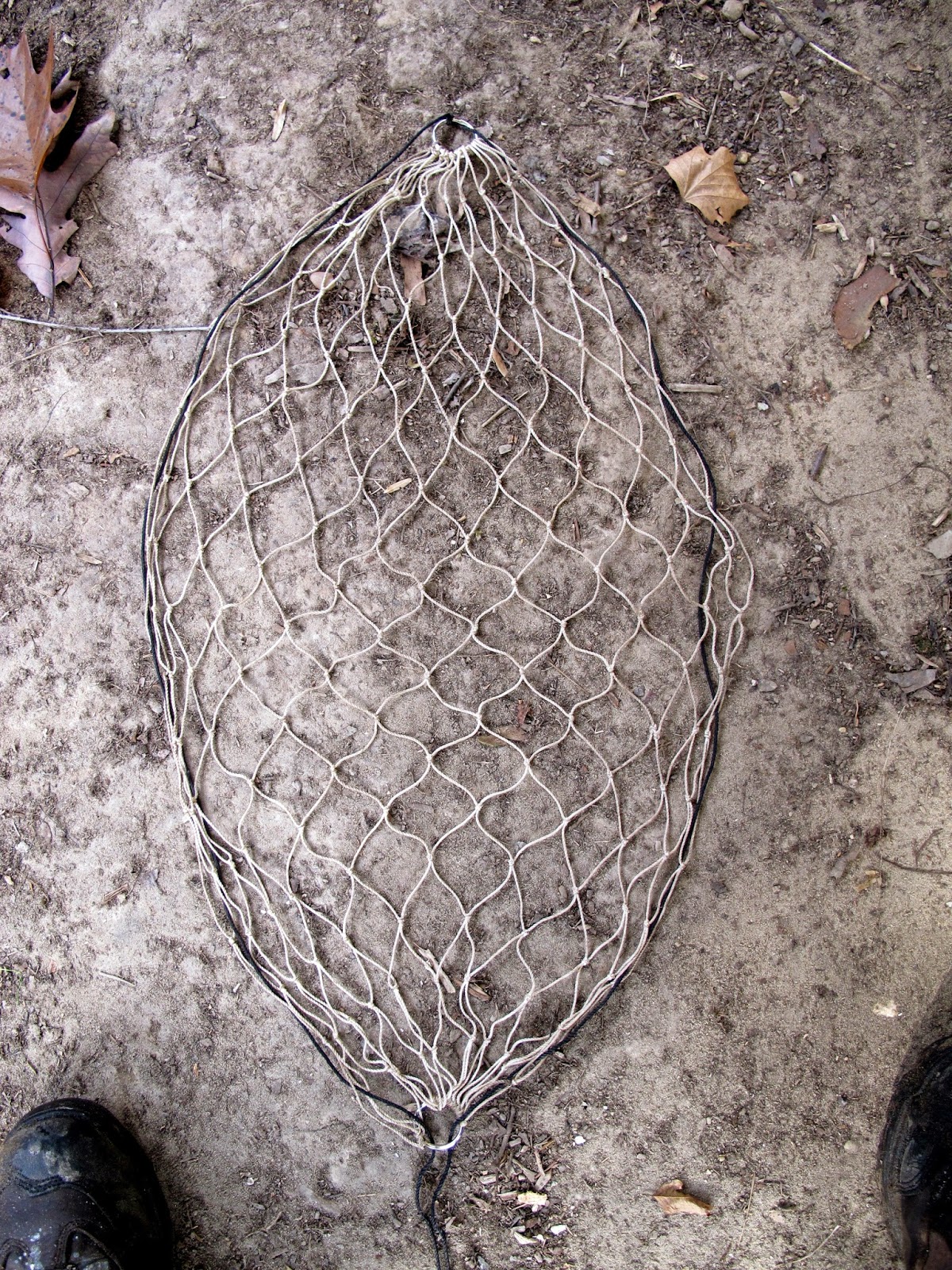 |
| Net Traps can be used to catch animals live and remember LIVE food never spoils |
 |
| An improvised Jig from a Locust Thorn and Deer Hair |
 |
| An easy Bank or limb line kit can be kept in the tube of your line itself |

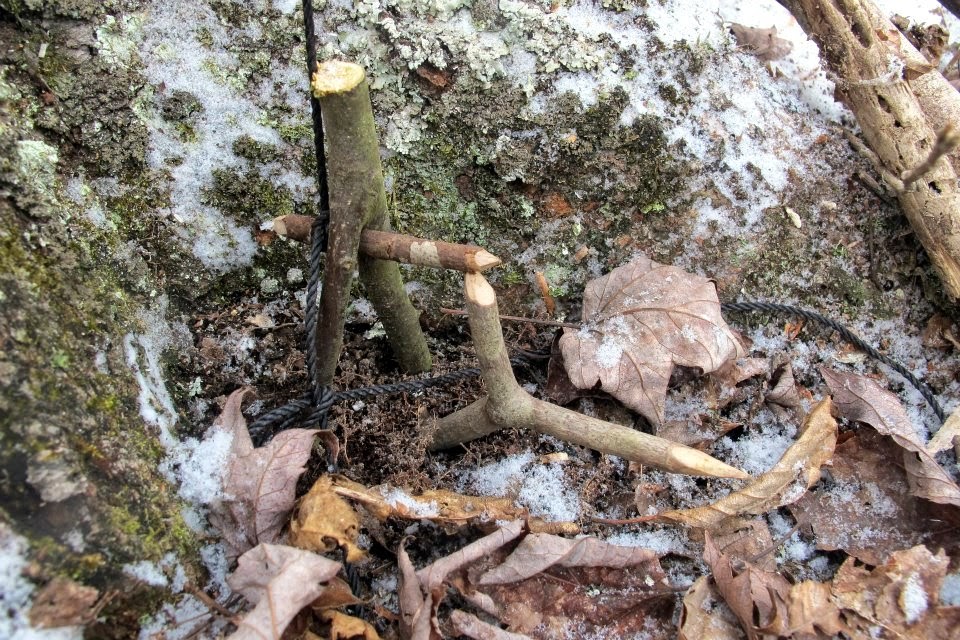
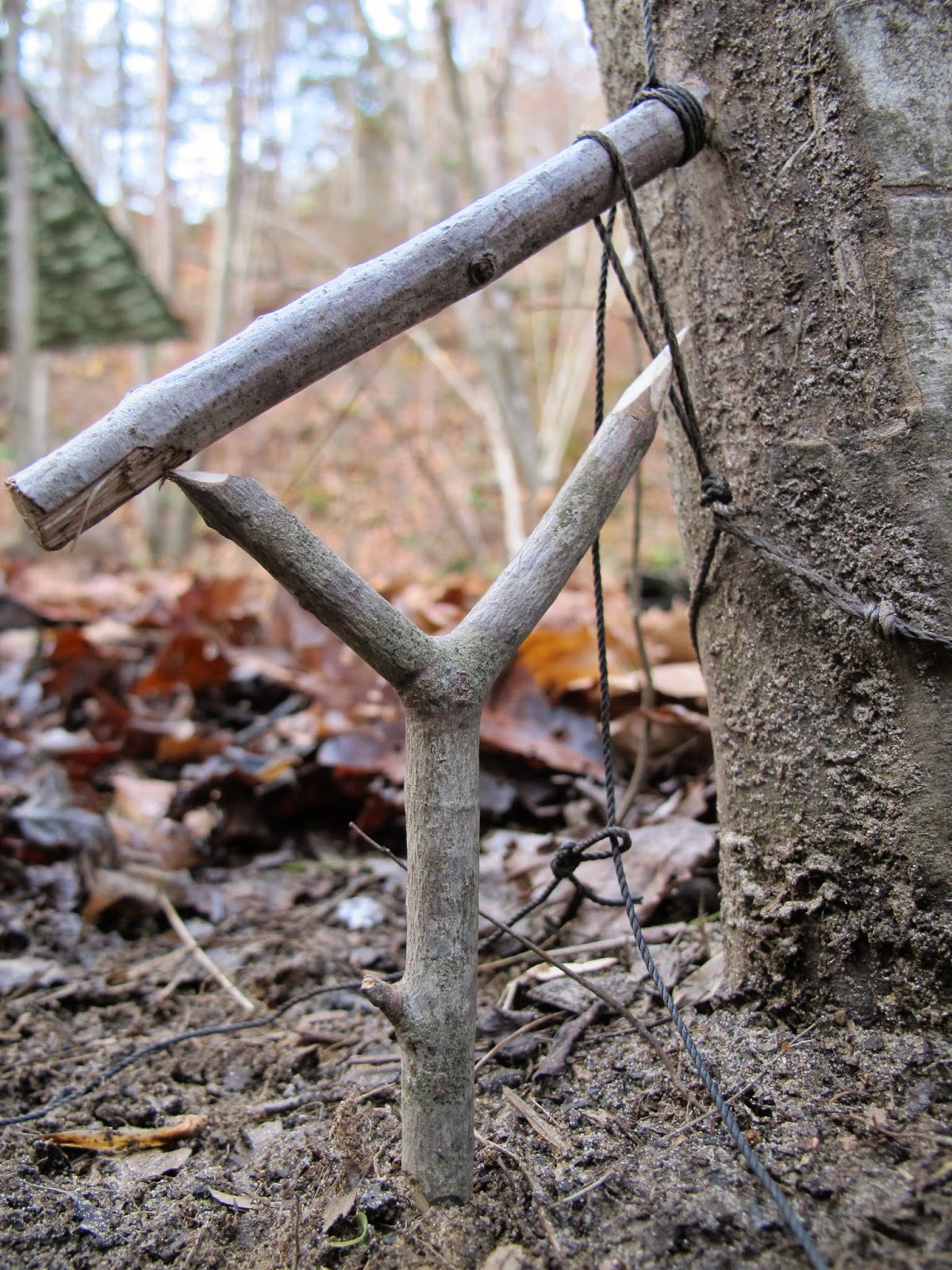

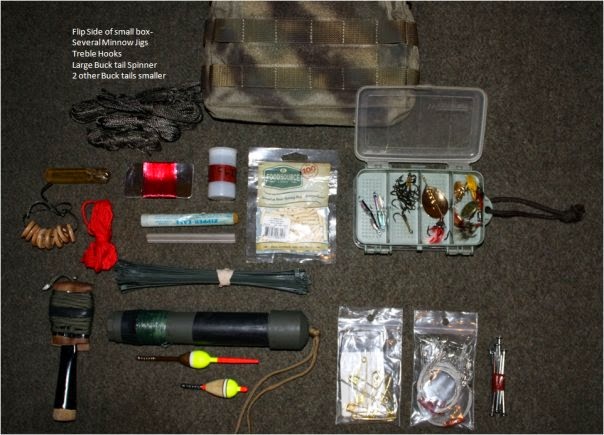
































A crawfish trap can be as simple as cutting the top off of a milk jug and putting a little meat in. Dig a hole that will cover the jug up about 2-3" sticking up in a creek or riverside. If your in a real survival situation (only if) and you've remembered to bring duct tape you can take a flat rock (anything flat) or a tree that's fallen over, or on a tree trunk, wrap the duct tape tacky side towards you for a "glue paper" trap. Again, only use in real survival situations.
ReplyDeleteincredible .... i am not quite sure = but, if i were to learn and apply carefully each of these techniques you have shared - i would feel confident i would have very little trouble surviving in a real situation ---- thanks for posting
ReplyDeleteThis comment has been removed by the author.
ReplyDeleteDo you specialized on the raccoon traps? I need to know, does this trap worth or not OxGord Live Animal Trap ?
ReplyDeleteDo you need Finance? Are you looking for Finance? Are you looking for finance to enlarge your business? We help individuals and companies to obtain finance for business expanding and to setup a new business ranging any amount. Get finance at affordable interest rate of 3%, Do you need this finance for business and to clear your bills? Then send us an email now for more information contact us now via (financialserviceoffer876@gmail.com) whats-App +918929509036 Dr James Eric Finance Pvt Ltd Thanks
ReplyDeletethanks...
ReplyDeleteI know a professional Private Investigator named james who has worked for me before on something i can't disclose, he offers very legitimate services such as clearing of bad records online without being traced back to you, He clone/hack mobile phones, hack Facebook account, instagram, WhatsApp, emails, Twitter, bank accounts, Skype, FIXES CREDIT REPORTs, track calls. He also help retrieve accounts that have been taking by hackers. His charges are affordable, reliable and 100% safe. For his job well done this is my own way to show appreciation, Contact him via address Premiumhackservices@gmail.com
ReplyDeleteText/Call; +17078685071